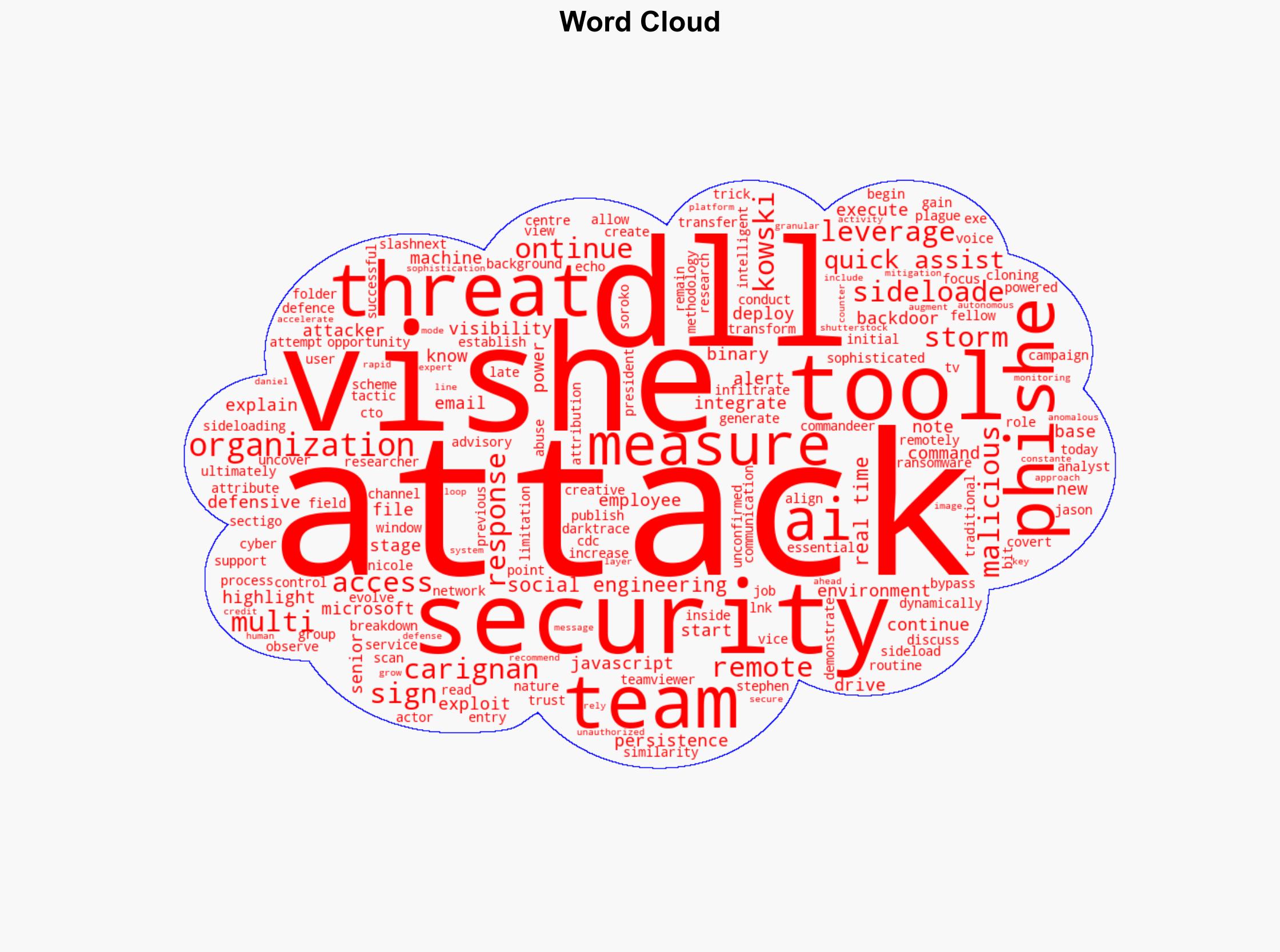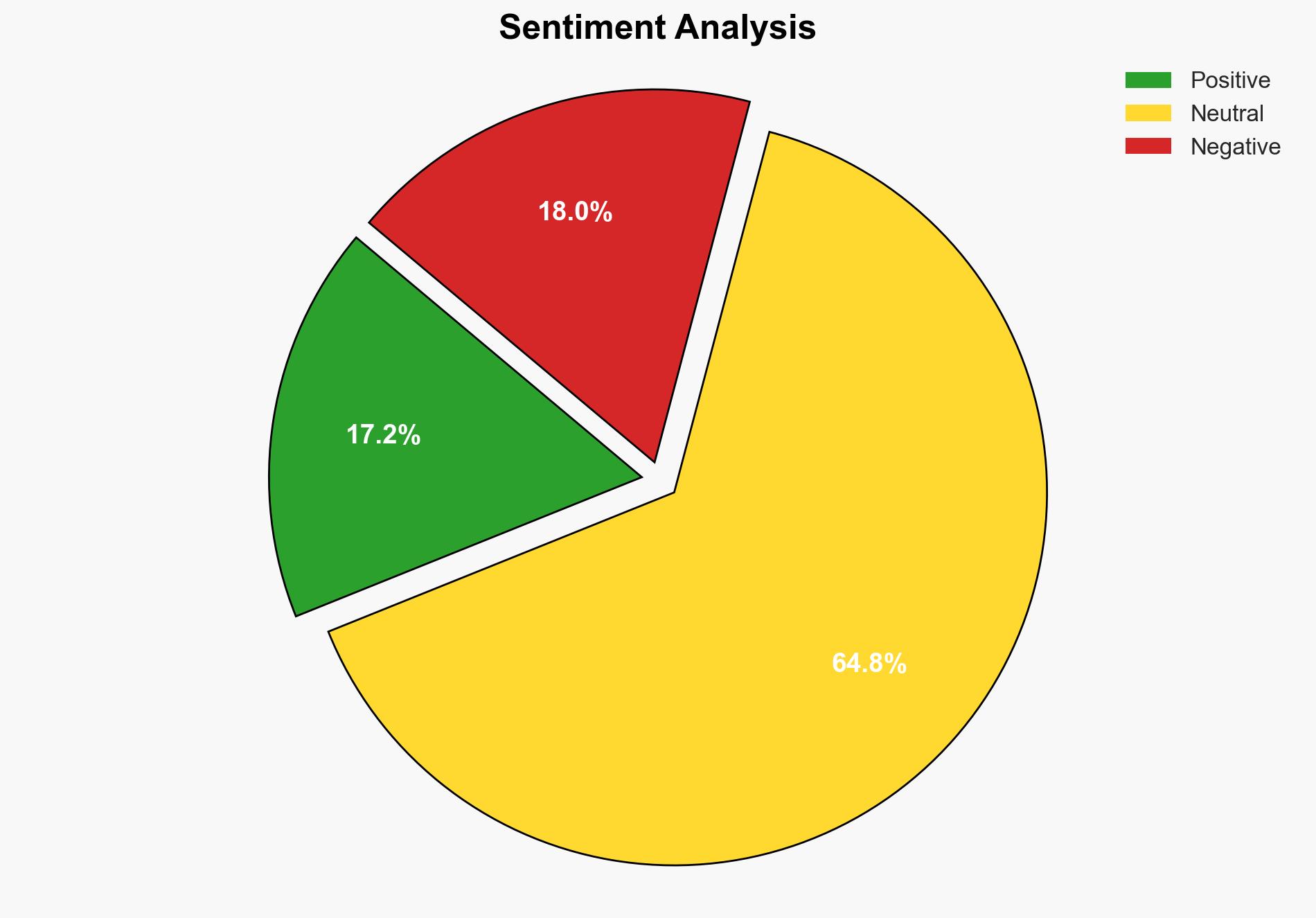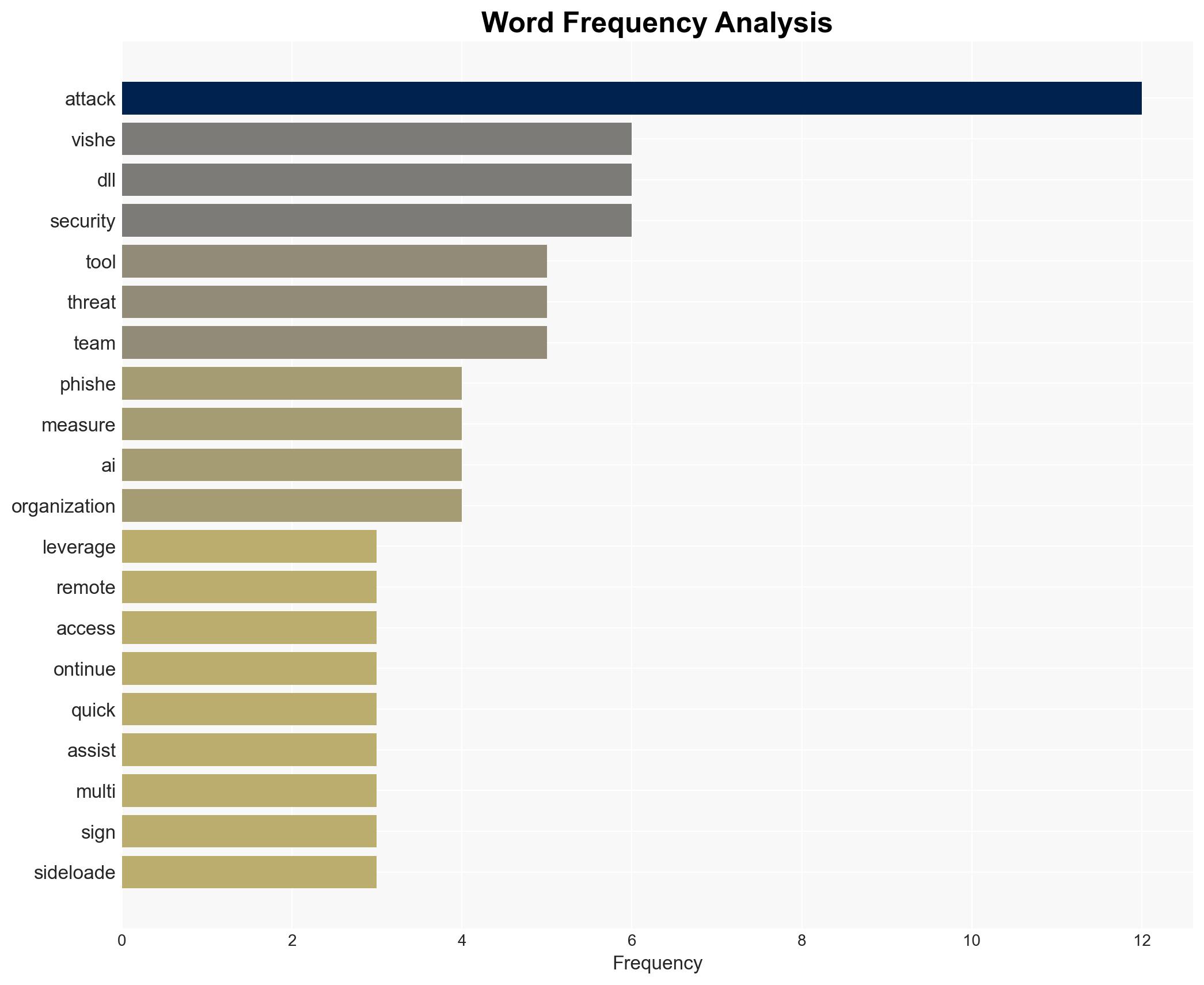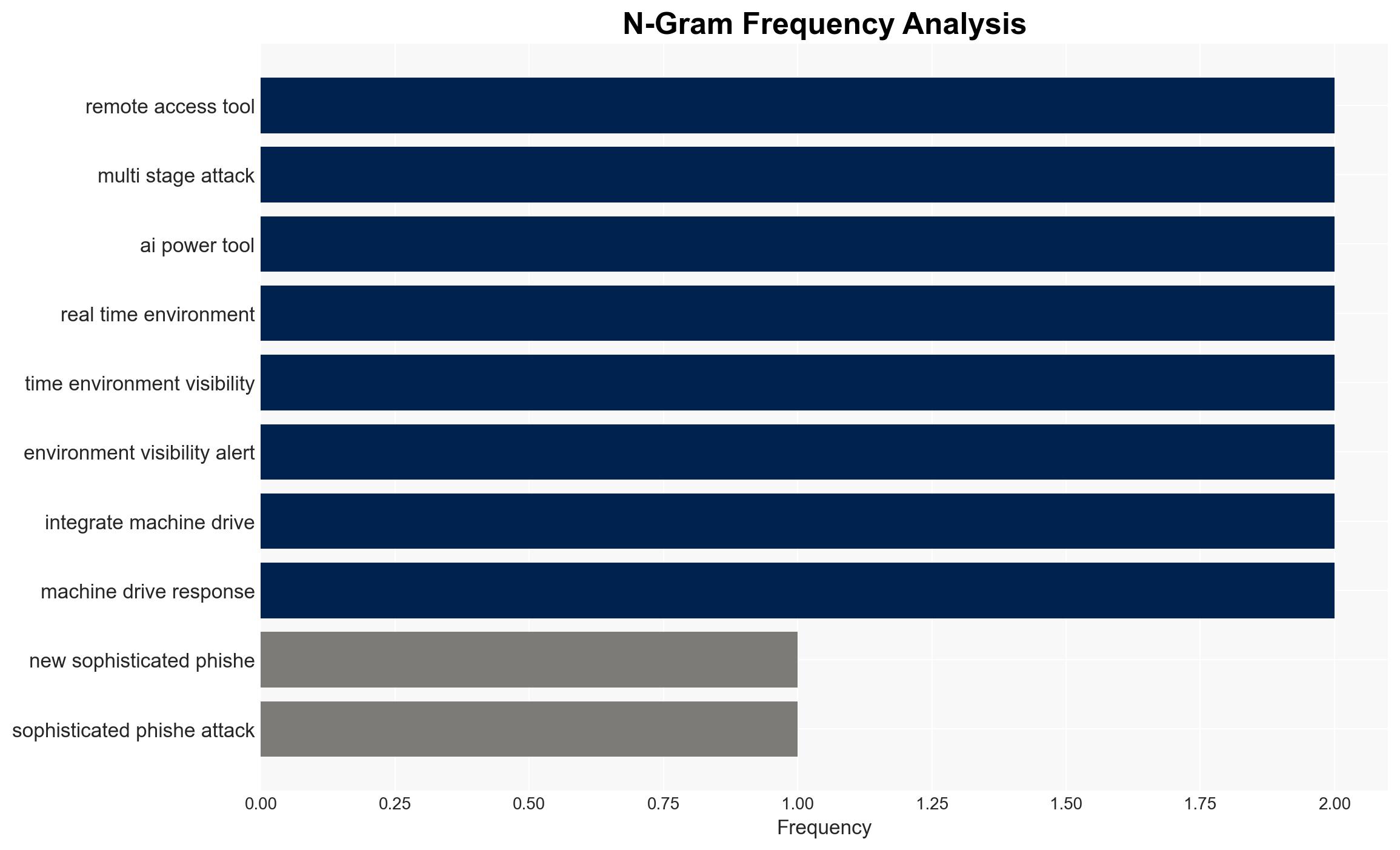New Phishing Attack Combines Vishing and DLL Sideloading Techniques – Infosecurity Magazine
Published on: 2025-04-01
Intelligence Report: New Phishing Attack Combines Vishing and DLL Sideloading Techniques – Infosecurity Magazine
1. BLUF (Bottom Line Up Front)
A new phishing attack has been identified that combines vishing and DLL sideloading techniques to exploit Microsoft Teams and Quick Assist. This multi-stage attack involves social engineering, remote access tools, and malicious DLLs to gain unauthorized access and deploy a JavaScript-based backdoor. Organizations are advised to enhance email security and implement AI-powered tools for real-time threat detection and response.
2. Detailed Analysis
The following structured analytic techniques have been applied for this analysis:
General Analysis
The attack begins with a vishing scheme that creates an opportunity to sign a binary, bypassing security measures. Attackers sideload a malicious DLL to commandeer trusted processes, transforming routine remote support into a covert entry point. The use of signed binaries and DLL sideloading aligns with known methodologies of certain threat groups. The attack’s sophistication highlights the evolving nature of social engineering tactics, leveraging AI-powered voice cloning to deceive users.
3. Implications and Strategic Risks
The attack poses significant risks to cybersecurity, particularly in sectors reliant on Microsoft Teams and Quick Assist for remote support. The abuse of signed binaries and DLL sideloading techniques could lead to widespread infiltration of networks, potentially impacting national security and economic interests. The increasing sophistication of phishing attacks necessitates a reevaluation of current security measures.
4. Recommendations and Outlook
Recommendations:
- Enhance email security with AI-powered tools to detect and respond to phishing attempts in real-time.
- Implement multi-layered security approaches, including secure remote access tools and anomaly detection systems.
- Encourage organizations to integrate machine-driven response systems for rapid threat mitigation.
Outlook:
In the best-case scenario, organizations adopt advanced security measures, significantly reducing the success rate of such attacks. In the worst-case scenario, failure to adapt could lead to increased breaches and economic losses. The most likely outcome involves a gradual improvement in defenses as awareness and technology adoption increase.
5. Key Individuals and Entities
The report mentions significant individuals such as Jason Soroko, Stephen Kowski, and Nicole Carignan. Their insights highlight the limitations of traditional security measures and the need for enhanced defenses against sophisticated phishing attacks.




